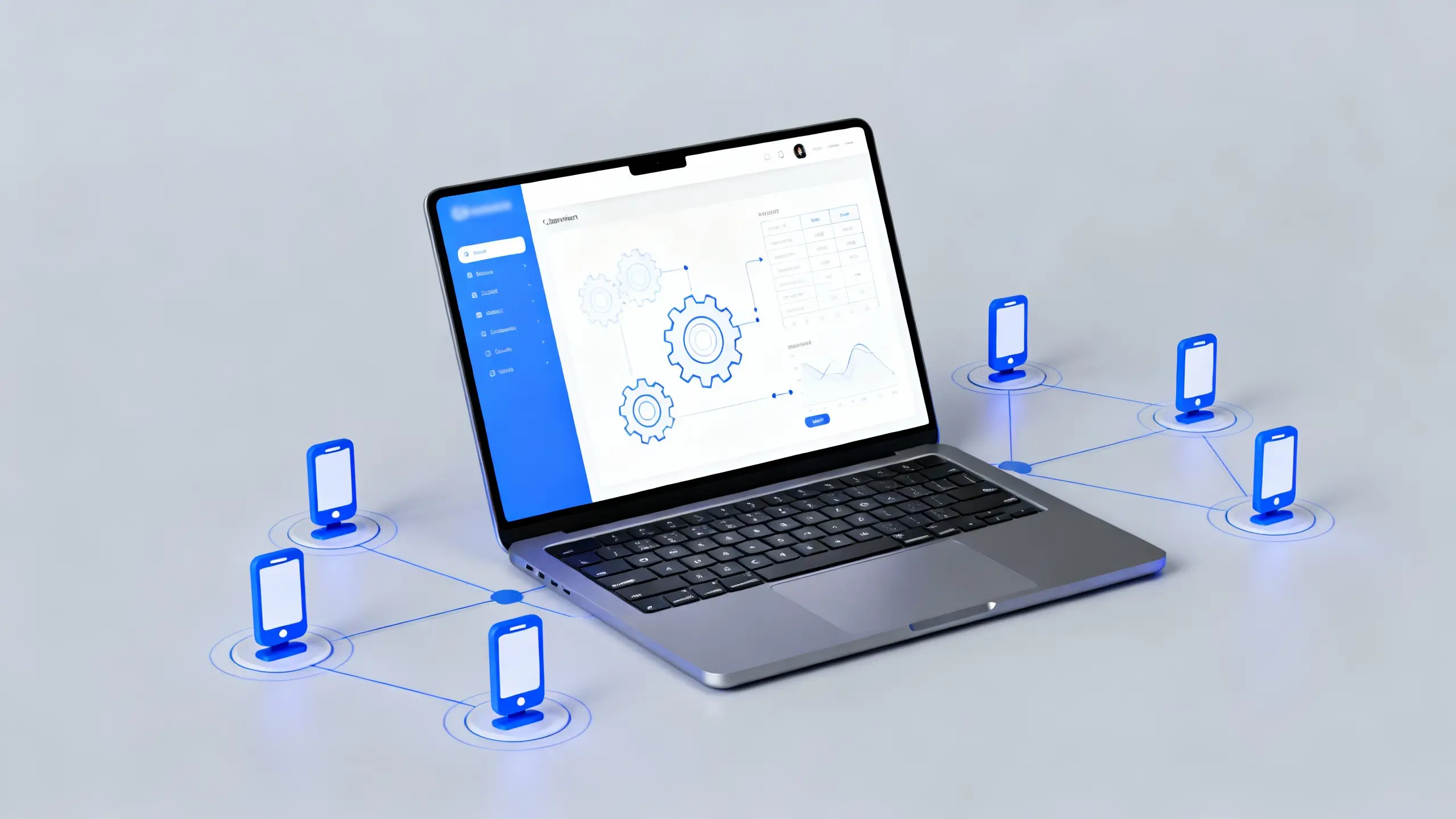Get In Touch
Email Us
info@aporios.comAPORIOS
APORIOS
APORIOS


Picture your rep qualifying a lead in São Paulo while a teammate in Prague nudges the same deal to finance. Nothing slips through the cracks. That’s the core promise of CRM automation software for remote teams: workflows that route, nudge, and surface sales or support actions—even when nobody shares an office.
CRM workflow automation lets you move contacts, deals, and tickets through a process without manual grunt work. Trigger-based rules assign new leads, send reminders as deals age, escalate overdue tickets, or auto-renew contracts. Cloud-based tools make this possible from anywhere. Automation builds a system that’s consistent, fast, and clear, even with async teams or cross-timezone offices.
Common automations for remote orgs:
Modern CRM tools keep everyone in sync. They cut the noise and help teams avoid dropped handoffs, missed follow-ups, or out-of-date spreadsheets. For a deeper inside look, check out our starter guide for automating remote team CRM.
Managing remote teams comes with unique challenges. The right CRM automation software can help you stay organized and responsive, no matter where your team is located.
Key features to prioritize:
A smooth experience in these areas matters more than advanced dashboards or flashy graphs.
True collaboration means less confusion and fewer redundant messages. Seek out:
These features help eliminate “did you see...” messages and foster teamwork.
Your CRM should do more than just send simple reminders. Look for:
Deep automation reduces manual work and streamlines operations.
Your CRM must work well with the rest of your tech stack. Essential integrations include:
A CRM should not become a data silo. Smooth syncing between tools increases efficiency and visibility.
Hidden costs can be a big problem as your team grows. Watch out for:
Choose a plan that fits both your current team size and future growth.
For more fundamentals, see our starter guide.
If a tool doesn’t check these boxes, chances are it isn’t built for distributed teams.
Picture a new lead dropping into your CRM at 10pm, routed overnight because your team spans continents. That only works if your system checks the essential boxes. Here’s what distributed teams can’t go without:
Don’t forget: real-world CRM automation is more than rules and templates. It’s about making handoffs blend into the workflow, not interrupt it.
Tool tip: No code automations — connects apps and webhooks for CRM processes.
Pull up a short list. Picture three different CRMs, each running the same sales workflow: a new lead pings in, gets assigned, the team follows standardized steps, and a renewal reminder hits six months later. Can each system handle your use case with real data, not just demo fluff?
Get specific. Write scripts that mirror your real-world process, including handoffs between time zones and async replies. Define must-haves like response-time SLAs, extensibility for custom objects, and mobile performance. Run a proof of concept using actual records, not just test entries.
Peel back the layers. Ask about platform uptime, formal SLAs, and what support looks like when an issue rolls past a timezone boundary. Dig into vendor roadmaps and app marketplaces—can you add functions in six months without waiting for a product update? Tally the total cost: credits, add-ons, storage, and seat limits often catch teams off guard.
Get smarter with real stories. Learn more from this sales playbook covering how distributed teams run hands-on vendor bake-offs.
A rep forwards an email, but the lead record’s stuck in another app. Sound familiar? That’s usually an integration choice gone wrong.
Remote-ready CRM automation starts with API-first platforms. You want tools that offer webhooks for instant updates and push events out. This keeps all your SaaS tools, billing apps, and support chats in sync, even across time zones.
Map out where your data lives. Use native connectors for basics like Google Workspace or Slack. For messy handoffs, look at iPaaS platforms—they bridge gaps between niche apps and bigger data warehouses. Sometimes you’ll still need a custom script when nothing else fits.
Modern CRMs manage identity with global account hierarchies, so deals and tickets aren’t siloed. For global teams, check data residency options. Some CRMs let you route records by region.
Deepen your integration stack: see the API-first guide for CRM system connections that won’t let your pipeline stall.
A structured roadmap makes CRM automation manageable for remote teams. Here’s a breakdown of how to get started:
Tool tip:
No code automations connect your CRM, chat, and forms—no developers needed.
You log in from a café, but the company CRM won’t budge until you pass two-factor checks. Every field you see is filtered by role—can’t peek at payroll if you’re in support. Audit logs tick along in the background, tracking edits and exports.
For remote teams, look for SSO and MFA out of the box. Set up conditional access: let admins define who gets in, from where, and when. Enforce field-level permissions, so new reps can’t see sensitive deals right away. Ensure your CRM tracks every change with audit trails.
Verify your vendor meets SOC 2, GDPR, and has a Data Processing Agreement on file. Data needs to be encrypted both in transit and at rest, ideally with automatic key rotation scheduled. Ask for incident response runbooks and make sure breach notification workflows are clear for a global team.
Tool tip: Build automations in Make — No-code workflows to sync CRM and chat for distributed teams.
It happens fast: your team wakes up to fifty alerts, but they’re so used to the noise they miss an urgent deal update. Or the CRM shows three versions of a lead after just a week, thanks to a messy import. Remote teams feel these mistakes more, since there’s no quick desk huddle to fix what broke.
Watch for these traps:
Eyes open from day one. For more on setting smart CRM rules, see our starter guide for remote teams.
What is the best CRM automation software for remote teams?
There’s no single winner. Check options like HubSpot for all-in-one sales and support, Pipedrive for lead routing, and Zoho CRM for SMBs. Look for remote-friendly UX and real-time collaboration before deciding.
How do we migrate without losing data and history?
Inventory your current fields, attachments, and notes. Use the new CRM’s import tools or migration partners. Run parallel exports and pilot small batches first to spot issues early.
Do we need iPaaS if the CRM has native integrations?
Not always. Native connectors cover popular apps, but you’ll want iPaaS (like Make or Zapier) for custom flows, advanced logic, or connecting less common tools.
How do we measure ROI for sales automation?
Set baseline metrics before rollout. Track time-to-response, deal velocity, and close rates by rep. If manual steps drop and team speed rises, you’re on the right track.
Which features matter most for support ticket automation?
Focus on round-robin routing, SLA timers, canned replies, and escalations. Auto-assign tickets and trigger alerts on overdue cases. For more detail, see our starter guide.


